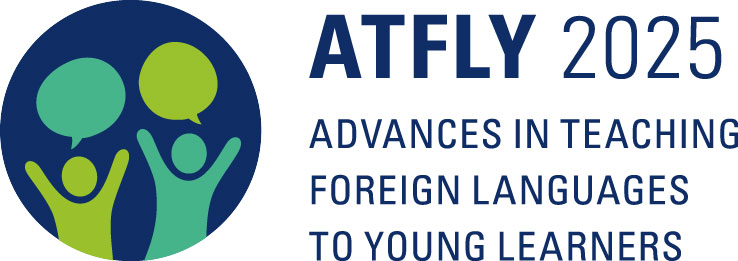
|
|
|
Plenary SpeakersPlenary 1: Prof. Dr. Yolanda Ruiz de Zarobe, University of the Basque Country, Spain Transforming Multilingual Classrooms: An Analysis of Content and Language Integrated Learning (CLIL) Practices with Young Children
This presentation provides an overview of Content and Language Integrated Learning (CLIL) in the context of young children, with a particular focus on primary education settings. Drawing from several research studies conducted over the years, we examine key factors related to CLIL. First, we address the importance of metacognitive awareness and explore methods for enhancing it through targeted training. Second, the presentation delves into critical literacy with young children. By fostering reflective thinking and self-regulation skills, we propose strategies to support their active engagement in the learning process. More recently, our research has focused on the role of translanguaging and multimodality in CLIL classrooms. Translanguaging, the flexible use of multiple languages, has been shown to support cognitive and social development in multilingual environments (Cenoz, 2017; Lin, 2020). We analyze how, even at a very young age, students benefit from the practice of translanguaging to break down linguistic barriers and improve communication. Additionally, we explore the role of multimodality, where the use of various semiotic modes such as gestures and facial expressions interact with language learning in CLIL settings, enriching the educational experience for all learners, including young children (Ruiz de Zarobe & Querol-Julián, forthcoming 2025). With this synthesis of our research, we present effective strategies to enhance the learning process in multilingual classrooms for young learners. References Cenoz, J. (2017). Translanguaging in school contexts: International perspectives. Journal of Language Identity & Education, 16(4), 193–198. https://doi.org/10.1080/15348458.2017.1327816 Lin, A. M. Y. (2020). Introduction: Translanguaging and translanguaging pedagogies. In V. Vaish, ed., Translanguaging in Multilingual English Classrooms. Berlin: Springer, pp. 1–9. Ruiz de Zarobe, Y. Querol-Julián, M. (forthcoming, 2025). Multilingualism and Multimodality in the CLIL/EMI classroom (Special Issue). Journal of Multilingual and Multicultural Development.
Dr. Karen Roehr-Brackin, University of Essex, UK Metalinguistic awareness in children’s additional language learning: Context counts
In this talk, I will provide an overview of the current state of research on metalinguistic awareness in additional language learning, followed by some specific suggestions for future investigation. Research on young learners (defined here as children under the age of 12) has yielded strong evidence for their capacity to develop and utilise metalinguistic abilities in the context of explicit teaching and learning (Lichtman, 2013, 2016; Roehr-Brackin, 2018, 2024a). Moreover, much progress has been made in the measurement of children’s metalinguistic awareness, as exemplified by recent work taking a range of approaches that include more traditional test-based assessment as well as innovative analyses of behavioural responses (Haugen et al., 2024; Roehr-Brackin, 2024b; Spit et al., 2021). With these foundations established, the research agenda can be refined. If metalinguistic awareness can be developed and has a positive role to play in principle, what is its specific impact in different contexts? Drawing on recent work with learners of different ages, I will argue that key variables to be taken into account are levels of bi-or multilingualism (Donnerer & Roehr-Brackin, under review; Hopp & Thoma, 2021), levels of literacy (Siekman et al., under review; Spit, 2024), language learning aptitude (Roehr-Brackin & Tellier, 2019) and learners’ metacognition (Roehr-Brackin & Pavlekovic, under review; Udry & Berthele, 2024). I will outline how these variables relate to each other and to metalinguistic awareness and what this interplay implies for additional language learning by children at primary-school level. Moreover, I will highlight issues which should be addressed next, ideally in terms of multivariate research designs that take the complex interrelations of different factors into account and thereby duly make context count. References: Donnerer, H., & Roehr-Brackin, K. (under review). Older adults' reported use of metalinguistic knowledge in beginner-level L2 learning: Comparing a monolingual and a multilingual instructional approach. Language Awareness. Special issue: Metalinguistic awareness across the lifespan. Haugen, K., Hamnes Carlsen, C., Möller-Omrani, & Christine. (2024). Developing an MLA-test for young learners – insights from measurement theory and language testing. Language Awareness. https://doi.org/10.1080/09658416.2024.2385762 Hopp, H., & Thoma, D. (2021). Effects of plurilingual teaching on g rammatical development in early f oreign-language learning. Modern Language Journal, 105(2), 464-483. https://doi.org/10.1111/modl.12709 Lichtman, K. (2013). Developmental comparisons of implicit and explicit language learning. Language Acquisition, 20(2), 93-108. Lichtman, K. (2016). Age and learning environment: Are children implicit second language learners? Journal of Child Language, 43, 707-730. Roehr-Brackin, K. (2018). Metalinguistic awareness and second language acquisition. Routledge. Roehr-Brackin, K. (2024a). Explicit and implicit knowledge and learning of an additional language: A research agenda. Language Teaching, 57(1), 68-86. https://doi.org/10.1017/S026144482200026X Roehr-Brackin, K. (2024b). Measuring children's metalinguistic awareness. Language Teaching, 1-17. https://doi.org/10.1017/S0261444824000016 Roehr-Brackin, K., & Pavlekovic, R. (under review). Language learning aptitude as a predictor of late-life L2 learning at beginner level. Language Teaching Research. Roehr-Brackin, K., & Tellier, A. (2019). The role of language-analytic ability in children's instructed second language learning. Studies in Second Language Acquisition, 41(5), 1111-1131. https://doi.org/10.1017/S0272263119000214 Siekman, B., Korenar, M., Spit, S., Verhagen, J., & Andringa, S. (under review). Metalinguistic awareness in adult emergent readers. Language Awareness. Special issue: Metalinguistic awareness across the lifespan. Spit, S. (2024). Word learning in emergent readers. Paper presented in the Department of Language and Linguistics, University of Essex, 21 November 2024. Spit, S., Andringa, S., Rispens, J., & Aboh, E. O. (2021). Do kindergarteners develop awareness of the statistical regularities they acquire? Language Learning, 71(2), 573-611. https://doi.org/10/1111/lang.12445 Udry, I., & Berthele, R. (2024). Young learners' academic self-concepts for L2/L3 French and English. International Journal of Multilingualism. https://doi.org/10.1080/14790718.2023.2301094
Plenary 3: Prof. Dr. Annamaria Pinter, University of Warwick, UK What insights can we gain from young learners through engaging them actively in research?
In this keynote talk, based on my recent book entitled Engaging Children in Applied Linguistics Research (Winner of the BAAL book prize 2024), I will outline some key justifications for involving children of all ages in research in an active way. I will then discuss some methodological and ethical dilemmas that adult researchers who work in partnership with children in research need to grapple with. I will include a few of my own recent examples for illustration. I will promote an argument that engaging children in research is possible and desirable in any context and it does not need to be an ‘all or nothing’ approach but rather can be interpreted differently in different projects with different research questions, including traditional research where children are passive participants to begin with. Engaging children in research even in a small way can bring many tangible benefits to all (teachers, researchers and children) and it is the adult researcher’s duty and responsibility to consider children’s roles and engagement in any piece of research they are planning. The talk is relevant for teacher researchers as well as researchers who undertake projects in schools as outsiders. References Pinter, Annamaria (2023). Engaging Children in Applied Linguistics Research. Cambridge: Cambridge University Press. https://doi.org/10.1017/9781009049078
|




